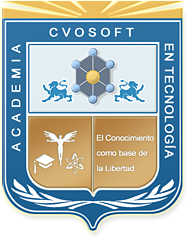
✒️La relación entre SAP Gateway y los servicios OData
La relación entre SAP Gateway y los servicios OData

The Relationship Between SAP Gateway and OData Services
1. Client-Server Architecture
In the context of web development, architecture refers to the communication model that connects various devices to a server via the internet.
Client-Server Model
The client-server model is a software design paradigm where tasks are distributed between resource or service providers (servers) and requesters (clients). Here’s a breakdown:
Client
- Definition: Devices that request services or resources from a server. Examples include computers, mobile phones, tablets, or any network-capable device.
- Function: Accesses services and resources via web browsers, making requests (requests) to servers.
Server
- Definition: Equipment that provides services and resources to clients.
- Function: Responds to client requests (responses). For example, serving a Twitter page stored on its servers.
Front-End and Back-End
Front-End
- Description: Everything that happens on the client side (browser). This includes graphical elements forming the site interface.
- Technologies: HTML, CSS, JavaScript.
Back-End
- Description: Everything that happens on the server side. This includes internal functionality and site logic, enabling the processing of client requests.
- Technologies: ABAP, PHP, Java, MySQL.
Understanding the request-response flow is crucial, as most web applications have two clear fronts: the front-end and the back-end.
2. Data Services
Abstract Interfaces
An important aspect of the World Wide Web (WWW) architecture is the use of abstract interfaces for component communication. These interfaces act as connectors, with contracts defining application protocols, document formats, and behaviors.
OData Protocol
The OData protocol defines such contracts by specifying a uniform protocol. It facilitates translation between ABAP APIs and OData entities using the SAP Gateway connector.
Benefits of Using a Connector
- Independence and Interchangeability: Both client and server can be independent and replaceable.
- Data Translation: Each connector translates documents in the communication channel to internal representations on both the server and client sides.
Functions of OData
OData has become the standard for data exchange on the Web, supporting CRUDQ functionality (Create, Read, Update, Delete, and Query). It is widely adopted due to its simplicity and widespread use, initially developed by Microsoft and now maintained by companies like IBM, SAP, and Microsoft.
Data Formats
OData represents data using JavaScript Object Notation (JSON) and ATOM/XML formats.
Functions of SAP Gateway
Today's business applications face UI and infrastructure challenges, with complex back-end systems and proprietary access methods. SAP Gateway aims to unify access to these back-end systems, offering a REST-based interface using the OData protocol.
Features of SAP Gateway
- Access Simplification: Provides a simple, secure, and controlled way to access SAP data via an open standard.
- Development Environment: Offers an optimal environment for developing web services, supporting RFC, BAPI, and HANA CDS views.
3. REST (Representational State Transfer)
REST is a software architecture for distributed systems like the Web. It uses a stateless client-server protocol, typically HTTP, and manipulates resources through global identifiers (URIs).
Principles of REST
- Resource Identification: Each resource is addressable through a unique URI.
- Stateless Protocol: Each HTTP message contains all the information needed to understand the request.
- Standard Operations: Applies well-defined operations (POST, GET, PUT, DELETE) to resources.
4. Understanding OData
OData is a standard protocol for querying and updating data, built upon REST principles, with a focus on providing a neutral API for web-based data interactions.
OData Services in SAP Fiori
OData services are integral to SAP Fiori applications, supplying business data to UI controls and handling transactions.
Benefits of Using OData
- Ease of Access: Provides easy database-like access to back-end data via HTTP.
- Industry Standard: Widely supported by major platforms, promoting interoperability.
- RESTful API Implementation: Facilitates SQL-like query capabilities within RESTful APIs.
Creating OData Services
Typically, an OData service is created for each application, consisting of entities, entity sets, service documents, and metadata documents (EDMX).
Key Components
- Entities: Structures of information with properties (fields).
- Entity Sets: Tables that return information.
- Service Document: Displays available collections in the service.
- Metadata Document: Provides comprehensive service information.
Example: Northwind OData Service
The Northwind service, maintained by Oasis, offers a data set based on a business scenario. It includes entities like customers, products, and suppliers, accessible through specific URIs.
Accessing and Using OData
- Service Document: Available at a specific URL, displaying available collections.
- Metadata Document: Describes data in the service, available at the service URL with $metadata appended.
- Entity Navigation: Direct access to entity sets by appending the entity name to the service URL.
Example
Accessing the Products entity in the Northwind service:
services.odata.org/V3/Northwind/Northwind.svc/Products.
Why OData?
OData's capability to expose and access information from various sources, including relational databases and content management systems, makes it a versatile standard. It is supported by major software manufacturers and simplifies development for programmers working with different technologies.
5. Benefits of SAP Gateway
Service Catalog
Each SAP Gateway system provides a service catalog that can be used to retrieve a list of all available services in SAP Gateway. The URL format to access this is as follows:
http://<hostname>:<port>/sap/opu/odata/iwfnd/CATALOGSERVICE/
- User-Friendly and Attractive Interface: With SAP Gateway, front-end developers can focus entirely on the application they are developing, dedicating maximum attention to creating an intuitive and appealing user interface.
- Innovation: Developing applications with SAP Gateway makes the implementation of new processes more flexible. Innovation can be achieved more easily, and SAP Gateway helps reduce implementation costs. Changes need to be made only where they are truly necessary. For instance, if there is already an application for booking trips on an iPhone, there is no need to modify the backend system to implement the same functionality for another platform. Only the front-end development needs to adapt to the new platform.
- Business Orientation: SAP Gateway integrates teams, processes, and data, reducing development complexity and increasing productivity. It also leverages business applications and social networks, making it easy to develop applications that meet the real-world business needs of the end user.
- Availability: SAP Gateway provides connectivity to SAP applications from anywhere using any language, program, or module without requiring extensive SAP knowledge. By using the OData protocol, SAP Gateway ensures access to backend data and processes almost anytime.
- Agility: Development cycles can be shortened by using SAP Gateway, leading to increased agility.
- Integration: Integration first occurs in the backend, which is essentially a single unit rather than several. Then, integration happens at the interface level, which benefits from the use of standards.
- Maintenance and Security: Data security remains with the backend system administrators, and the same applies to backend system maintenance. However, frontend system maintenance varies depending on the channel used. For specific needs in this area, SAP offers solutions like the SAP Mobile Platform, which allows for mobile application maintenance.
- Cost Efficiency: By shortening the development cycle and allowing experts to focus on their areas of specialization, development costs can be reduced. The primary reason for this benefit is the reduction of friction between different stakeholders. Additionally, the implementation of SAP Gateway is relatively inexpensive and straightforward. Existing SAP customers might already have the necessary licenses.
- Installation and Configuration: SAP NetWeaver Gateway 2.0 is a component that is pre-installed if your NetWeaver version is 7.40 or higher. This can be confirmed by checking the SAP BASIS component version. For NetWeaver 7.31, this component needs to be installed separately by the BASIS team.
Important Transactions in SAP ERP for SAP Gateway
- Gateway Service Maintenance (/IWFND/MAINT_SERVICE): Manages central gateway services in the front-end.
- Gateway Client (/IWFND/GW_CLIENT): Testing environment for the gateway service in the interface.
- Gateway Service Builder (SEGW): Development environment for Central Gateway in the backend.
- SE80: Central ABAP development environment in the backend.
Sobre el autor
Publicación académica de Jaime Eduardo Gomez Arango, en su ámbito de estudios para la Carrera Consultor en SAP Fiori.
Jaime Eduardo Gomez Arango
Profesión: Ingeniero de Sistemas y Computación - España - Legajo: SW34C
✒️Autor de: 149 Publicaciones Académicas
🎓Cursando Actualmente: Consultor en SAP Fiori
🎓Egresado de los módulos:
 Disponibilidad Laboral: FullTime
Disponibilidad Laboral: FullTime
Presentación:
Ingeniero de sistemas y computación con 8 años de experiencia el desarrollo frontend & backend (react/node) y en cloud (aws), actualmente desarrollando habilidades en sap btp, ui5, abap y fiori.
Certificación Académica de Jaime Gomez
















